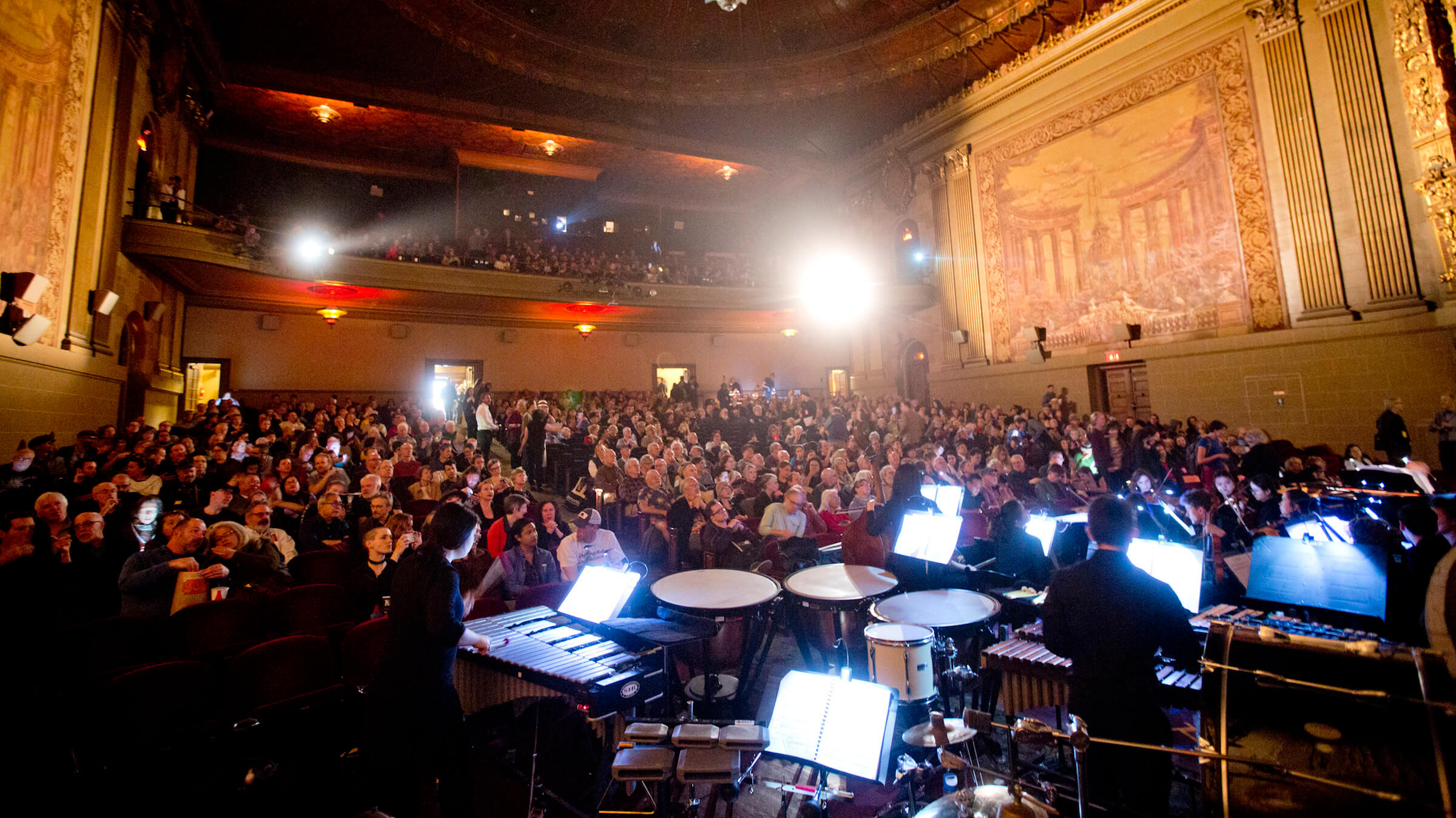This feature was published in conjunction with the screening of The Cameraman at SFSFF 2019
The hard-working piano player is an iconic image of silent cinema and with good reason: a 1922 poll of theater owners showed that solo piano was far and away the most popular form of musical accompaniment. But for something big and special? Well, there was nothing like an orchestra. By 1920, there were three hundred theater orchestras with thirty or more musicians in the United States but cue sheets and music created from collections of “photoplay” music were the norm. The bespoke orchestral score—either originally composed or arranged from existing music—created especially for a single film at the behest of filmmakers remained worthy of a prominent place in advertisements. In addition to the music itself, these scores contain a wealth of information about how the film in question was to be ideally played in the eyes of the distributor. Specific instructions regarding projection speed (exactly so many minutes per thousand feet of film), recommendations for substitute instruments if those called for were unavailable, and sometimes even suggestions for when to dim the house lights during the overture. How often these instructions were actually followed is a matter for debate.
OVER THE RAINBOW
Every story of custom film scores must begin in the Land of Oz. L. Frank Baum’s 1908 roadshow “The Fairylogue and Radio-Plays” was a multimedia presentation that included slides, live actors, lectures by Baum, and motion picture sequences by the Selig Polyscope company featuring Romola Remus as Dorothy. The whole extravaganza was accompanied by twenty-seven musical numbers composed by Nathaniel D. Mann and his music is generally thought of as American movies’ first bespoke score. None of the film sequences survive. Baum later entered into the film production business with composer Louis F. Gottschalk, who had written music for Baum’s play The Tik-Tok Man of Oz (1913). The resulting company produced Oz-themed features like His Majesty, the Scarecrow of Oz (1914) and The Magic Cloak of Oz (1914). Gottschalk’s score was featured conspicuously in advertisements for The Patchwork Girl of Oz (1914); reviews of the time described it as “splendid” and “a rare treat.” A theater in Pennsylvania even engaged members of the Philadelphia orchestra to play along with the screening.
NAME-CHECKING COMPOSERS
Tailor-made film scores were hardly an American monopoly, with Europe actually leading the way. L’Assassinat du Duc de Guise (1908) was a standalone film and a prestige production from top to bottom. The picture featured original music by Camille Saint-Saëns, one of the most revered living French composers at the time. Saint-Saëns plunged in zealously, taking notes during a screening of the film and delivering a rousing and suspenseful score that complemented the enthusiastic on-screen slaughter of the unfortunate duke.
Russia was a major export market for French productions and producer Alexander Drankov decided what was good enough for de Guise was good enough for his costume epic Stenka Razin. Mikhail Ippolitov-Ivanov’s score for the 1908 film, which could be played by orchestra, piano, or gramophone, incorporated the popular folk song “Mother Volga.” The song, traditionally performed by chorus, was associated with the Volga pirate of the title and Russian audiences sang lustily along wherever the score played.
When George M. Cohan’s play The Meanest Man in the World was brought to American screens in 1923, the Principal Pictures Corporation promised a “typical George M. Cohan score” arranged from his biggest hits of the last decade as well as marketing a tie-in sheet music of a new song.
FEATURES, HITS AND MISSES
Longer films allowed for more elaborate music. Pietro Mascagni’s score for Rapsodia Satanica was intricately tied to not only the action on the screen but to its characters and themes. Other composers recognized that the crushing schedule of theater orchestras required some consideration. In his introduction to his score for Monsieur Beaucaire (1924), Hugo Riesenfeld wrote that he simplified the music as much as possible so that it could be played with limited rehearsal time.
Orchestras weren’t the only ones who had to work quickly. Dmitri Shostakovich was engaged to compose an original score for New Babylon in December of 1928, with the piano music required in February of 1929 and an arrangement for a fourteen-piece orchestra due a month later. Maestro Shostakovich fulfilled his commission speedily; director Leonid Trauberg later recalled that the piano version was completed in just two weeks. Douglas Fairbanks’s swashbuckler epics were always special events and had music to match. During the publicity campaign for the 1926 wall-to-wall red-and-green Technicolor spectacle The Black Pirate, composer Mortimer Wilson followed the star in a radio appearance to explain the film’s nautical-flavored score and personally conducted selections. However, during the film’s premiere in New York City, the audience’s applause was so thunderous at points it drowned out the music.
Film scores did not always please everyone. In the case of The Volga Boatman, the generally acclaimed score by Riesenfeld was deemed insufficiently Slavic by Daniel Breeskin, director-in-chief of music for the Stanley-Crandall theater chain and Ekaterinoslav native. He took the matter personally and spent the rest of the year arranging his own selections to fit the picture.
No matter what the feature, local newspaper advertising made much of any special musical arrangements with the names of accompanying orchestras given a place of honor. In order to make this extravagant music more affordable, some theaters cut corners. A theater in Iowa advertised that it would only offer orchestra music for evening showings of Monsieur Beaucaire with matinees presumably being presented with cheaper, simpler accompaniment. Price difference: ten cents.
Image credit: Tommy Lau

